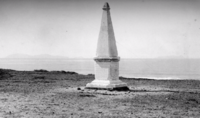
Photo from wikipedia
The Journal of Southern History, Volume LXXXIX, No. 2, May 2023 “racism and discrimination” prevented nonwhite people from accessing poor farms (p. 4). Even so, Birk brings in their experiences… Click to show full abstract
The Journal of Southern History, Volume LXXXIX, No. 2, May 2023 “racism and discrimination” prevented nonwhite people from accessing poor farms (p. 4). Even so, Birk brings in their experiences when the sources permit. She has harvested extensive information from the records of poor farms throughout the country and the local and state agencies overseeing the poor farms, newspaper accounts, and the proceedings of organizations such as the National Conference of Charities and Corrections. The Fundamental Institution is very much an institutional history of poor farms with chapters devoted to local management and state inspections, conditions on the farms, and the role of superintendents. However, there is also a chapter dedicated to “the roles of women as employees and residents” (p. 13). As Birk notes, women “not only made up a critical part of the staff of institutions, but also used them for reasons related to abuse, pregnancy, and abandonment” (p. 13). Though it is primarily an institutional history, Birk’s book humanizes the narrative by examining the conditions that pushed people onto poor farms and by doling out the personal stories of residents. Birk shows how poor farms represented “one of the last vestiges of institutionalized Jeffersonian agrarianism,” linking farming, local control, and self-sufficiency (p. 10). Poor farms consolidated food, housing, and medical expenses, using the farm’s produce to help offset some of these costs. County farms initially provided relief to a population of mostly male, landless, seasonal agricultural workers who had difficulty finding regular employment due to economic depression, age, or disability. As industrial capitalism changed work, agriculture, and society as a whole, the poor farm changed with them. Poor farms took in a wide range of destitute individuals, including the elderly and the mentally ill, who could no longer be supported by family networks. As time progressed, the need for specialization became apparent, and separate institutions were established for the mentally ill. Many poor farms transitioned into nursing homes during the twentieth century. The Great Depression and the growth of federal intervention in social services sped these changes, resulting in the closure of many poor farms. Historical memory of the period between the 1870s and the 1920s has often viewed relief as coming from private charities that identified poverty with a lack of personal responsibility. Birk reveals how poor farms were founded on communal thrift and need, rather than on assessments of individual worthiness. As economic crises and poverty remain persistent and growing features of today’s society, Birk’s study will be of interest to those seeking a historical understanding of social welfare.
Journal Title: Journal of Southern History
Year Published: 2023
Link to full text (if available)
Share on Social Media: Sign Up to like & get
recommendations!